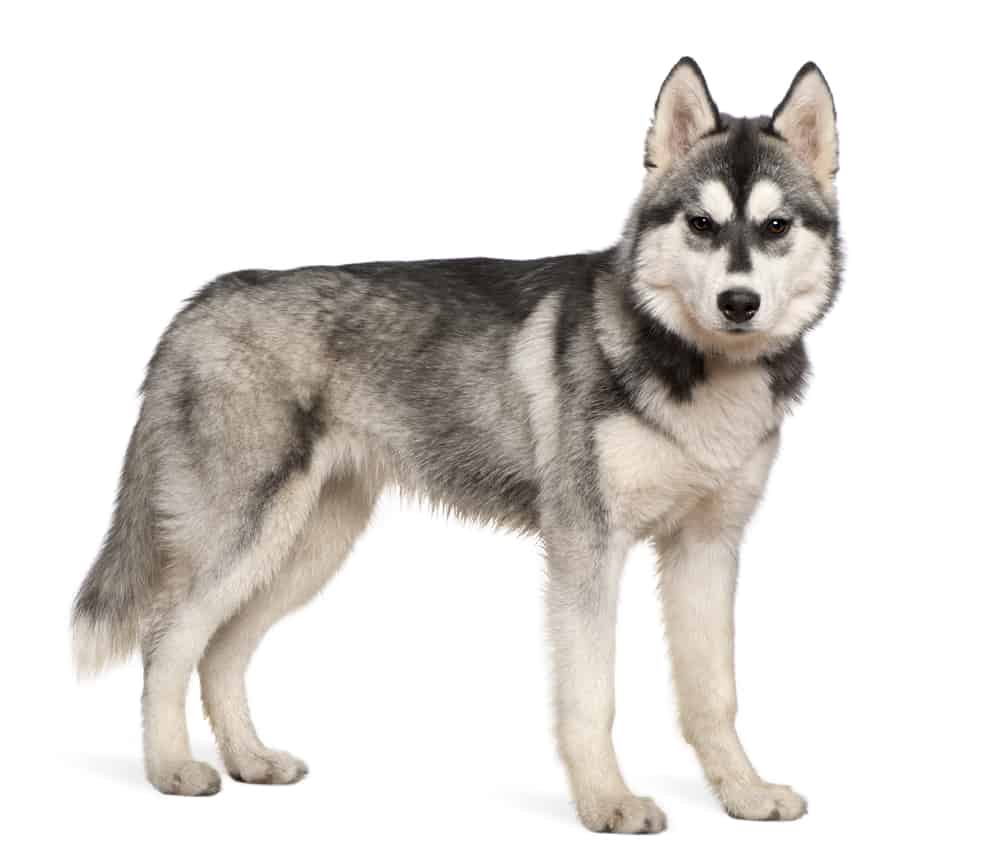Other Names: Chukcha, Husky
Country Of Origin: Russia
Dog Group: Working
Size: Medium
Recommended For: Families, couples, single owners
Maintenance Level: Moderate
Lifespan: 12-14 years
Temperament: Affectionate, energetic, loyal
FAQ
Good For First-Time Owners: No
Good With Children: Yes
Good With Other Animals: Yes
Good With Strangers: Yes
Good For Apartments: No
Exercise Requirements: Daily walking
Can Live In Hot Weather: Yes, but be careful
Can Live In Cold Weather: Yes
Can Tolerate Being Left Alone: Yes
Grooming: Moderate
Trainability: Easy/moderate
Breed Overview
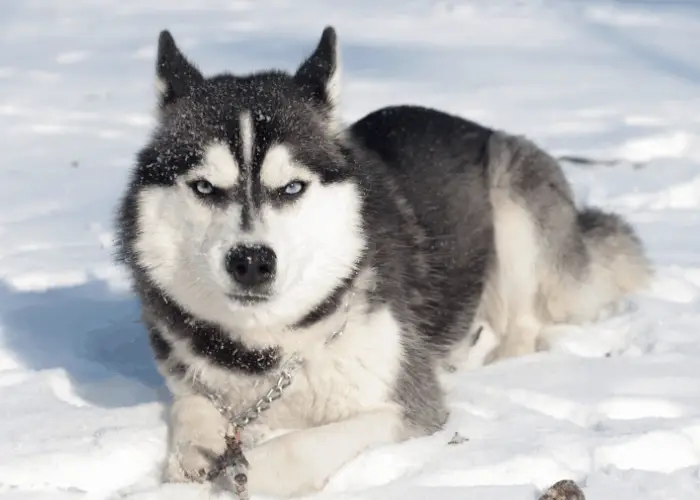
The Siberian Husky is an easily recognizable breed of dog that originates in Russia.
It was originally bred to pull sleds and transport freight across long distances, which has resulted in a dog with incredible stamina and endurance in the cold.
Huskies make excellent family pets and have a friendly and loyal temperament.
However, they need the right socialization to control their energy levels; otherwise, some owners might find them too much to handle. Similarly, they’re a pack breed and should ideally be kept with other Huskies.
Color: Anywhere from black to white, sometimes with red mixed in
Height: Males – 21-23.5 inches, Females – 20-22 inches
Weight: Males – 45-60lbs, Females – 35-50lbs
Personality and Temperament
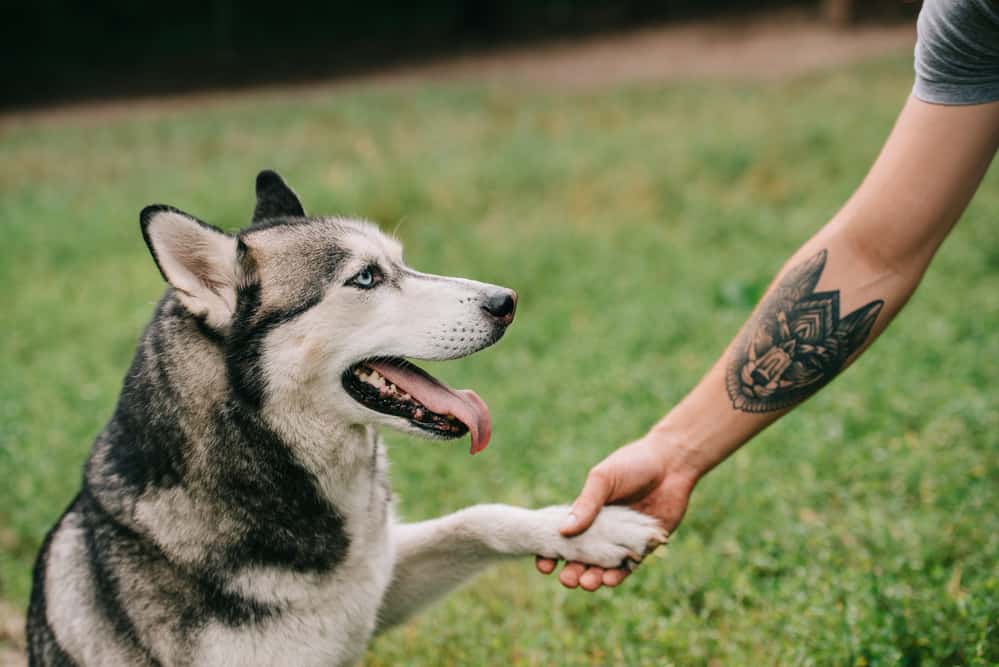
Siberian Huskies are very friendly and sociable and love being around people.
Their love of attention can sometimes make them hyperactive, but this can easily be managed with the right training.
The Husky’s temperament makes it a popular choice with many owners.
However, proper training is vital to get the Husky to behave correctly. Huskies aren’t necessarily hard to train, but they need a confident owner who can control their energy levels.
Obedience training should begin as early as possible and continue throughout the dog’s life. This is the easiest way to ensure they develop into happy and well-behaved dogs.
The Husky’s sociable nature makes it a great choice as a family dog. While some people consider Huskies a dangerous breed, this is often due to boredom and improper exercise.
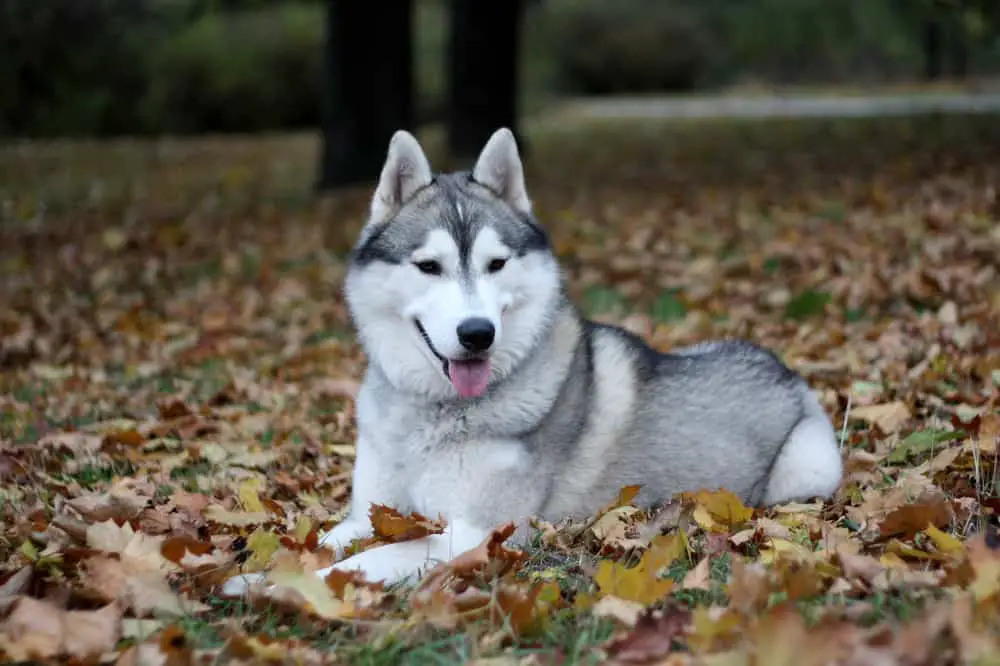
When raised and nurtured properly, a Husky can make a great addition to the family. Similarly, they love playing with children and happily cuddle them for hours.
The most important fact to know about raising a Siberian Husky is its exercise needs. Huskies were bred to run long distances in harsh conditions and were energetic.
They need as much exercise as possible, and at least 2 hour-long daily walks should keep them under control. However, young Huskies will need more than this and should be given as much exercise and playtime as possible.
While Huskies aren’t known for being wary of humans, they can protect their property and owners.
If they feel threatened, they can become dangerous, so it’s important to train them to act around people while they’re still young. A Husky will likely howl or bark if a stranger comes near the home, and some neighbors might find this annoying.
Due to their size and energetic nature, Huskies are not a good choice if you live in an apartment.
A Husky needs plenty of land to enjoy and lots of space in the house. After all, they’re pretty large dogs. They’re not a brilliant choice for urban living, and you should only consider getting one if you’ve got access to enough land to fulfill their exercise needs.
Another important thing about Huskies is the climates they can live in. They were bred for use in Siberia, where it’s incredibly cold, so Huskies are much happier in colder climates. They love the snow and thrive in cold environments.
When it comes to hotter climates, Huskies can live in them, but owners must be very careful. Huskies have a naturally thick coat designed to keep them warm in the snow, so this obviously won’t be suitable for hot places.
They can’t regulate their temperature as effectively as some breeds, so if you keep one in a hot place, be careful when you walk the dog in the summer.
Huskies are usually fine around other dogs and animals, but it’s important to socialize them early.
RELATED ARTICLE: Siberian Husky Vs. Alaskan Klee Kai Comparison
Rather than this being about stopping dangerous behavior, Huskies can get excited very easily and often don’t know how to control this excitement. Some other dogs can be intimidated by this, which can lead to problems.
Huskies don’t necessarily have a strong prey instinct, but owners should be wary of leaving them unattended around small pets.
Many Husky owners consider them a handful, so they don’t make a good choice for first-time owners. A Husky needs to be raised by a confident, experienced owner who can handle their energy levels and potential stubbornness.
One of the great things about Huskies is that they prefer living in packs, meaning it’s ideal for keeping more than one!
This also helps with needing to leave them alone while you’re at work, which most Huskies will be fine with if they have company. Always give the dogs plenty of affection and stimulation when you get home, as this will hopefully help with boredom while you’re away.
Grooming
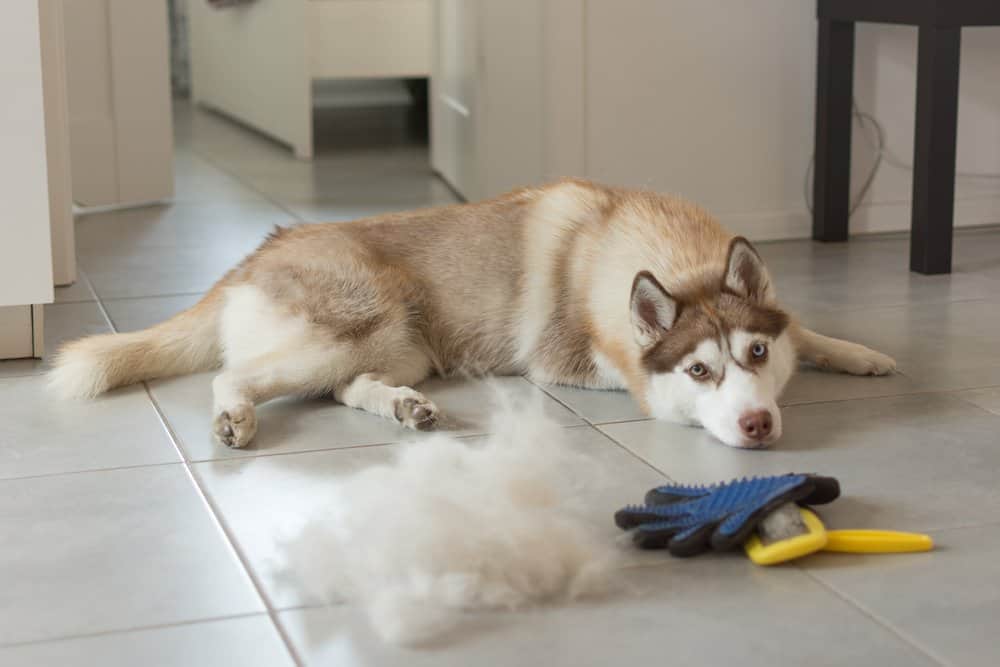 Huskies have an incredibly thick double-layered coat that comes in several colors. These are mostly on the black-white spectrum, with gray and white being the most common.
Huskies have an incredibly thick double-layered coat that comes in several colors. These are mostly on the black-white spectrum, with gray and white being the most common.
However, Huskies also come in shades of brown and red, which are rarer but are becoming more popular.
Huskies shed seasonally, mainly from their undercoat, which should be groomed with a pin brush. Weekly brushing helps keep the coat healthy, but this should be increased to daily grooming during shedding season.
A Husky’s coat generally keeps itself clean, so they only need to be bathed when dirty.
Bathing them too frequently can dry out their skin, so it’s best to avoid it. Brush a Husky’s teeth every few days and trim its nails whenever needed.
Common Diseases and Conditions
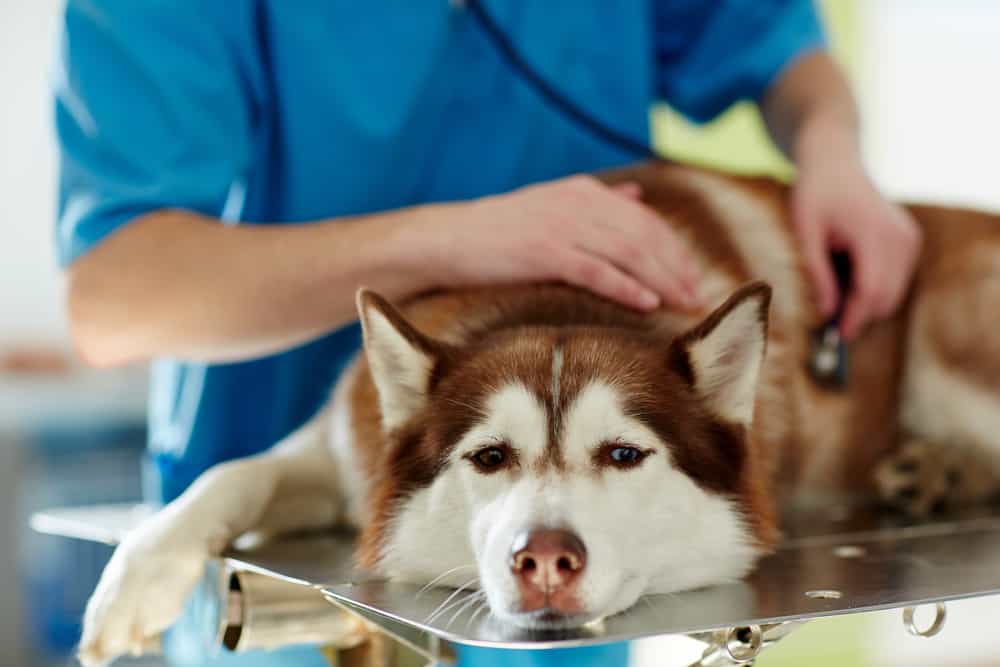
Unlike many other purebred dogs, the Siberian Husky is at very low risk for hip dysplasia, a common condition.
Overall, Huskies are very healthy and suffer from a few hereditary conditions.
However, they suffer mainly from seizures and eye conditions, such as cataracts, glaucoma, and progressive retinal atrophy.
While many of these conditions develop later in the dog’s life, most breeders will screen their stock before breeding to ensure they’re not passed on to the puppies.
History
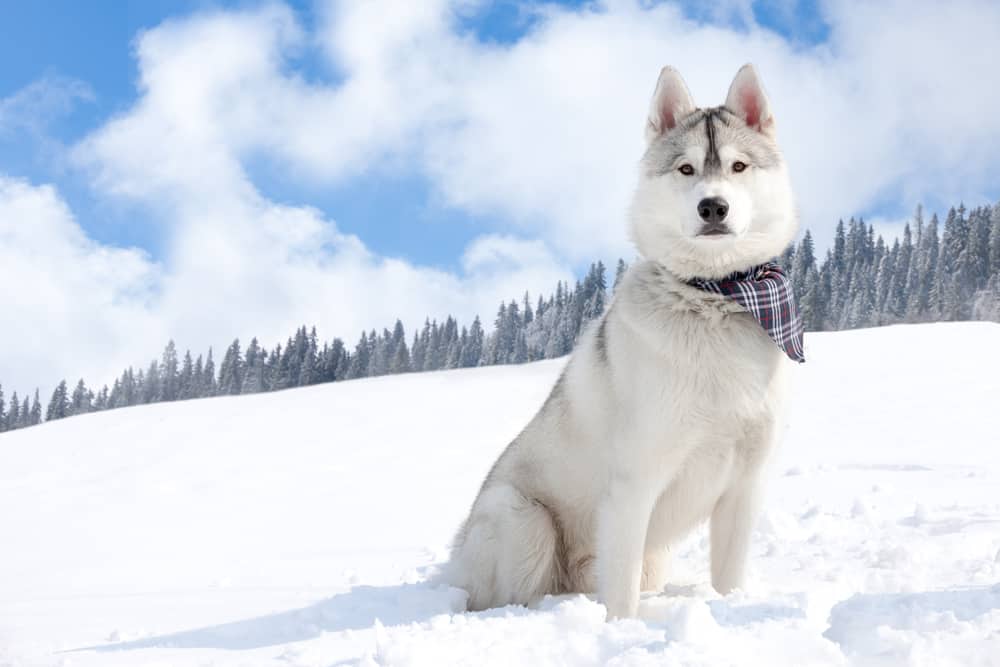
Siberian Huskies technically belong to the Spitz dog category, although they’re unique. Huskies, along with the Malamute and Samoyed, all developed from the same ancestor, the original sled dog used across almost all Eskimo territory.
The history of a breed like the Husky is difficult to trace because of the culture’s way of recording history.
Most importantly, breed standards weren’t considered important. However, the Husky, in its primitive form, is believed to have been used by humans for thousands of years for moving across snowy territories.
The Siberian Husky was initially brought to America in 1908, where it was used in Alaska for exploration.
With the help of the Husky, explorers could cross the previously uncharitable territory, which was a massive help during the gold rush.
Leonhard Seppala was the main Husky breeder then, and it’s believed that all American Huskies descend from his stock.
In 1930, the exportation of Huskies from Siberia to America was stopped. Coincidentally, this was the same year that the American Kennel Club recognized the Siberian Husky as a breed. This shows how Americans began breeding their own Huskies to save importation.
Huskies continued to be popular dogs for sledding across snow and helped people explore new areas and deliver supplies to remote colonies.
Huskies have been used by the Army, the Navy, and civilian departments, and dog sledding is still the easiest, and often fastest, way to cover ground in these places.
However, as the breed became more famous because of its achievements, it became a family dog and companion pet.
The Husky’s intelligence and appearance make them a popular choice worldwide and are a common sight in pop culture.
Did You Know?
- One of the most famous Huskies is Balto. Balto was part of a team of dogs that delivered diphtheria medicine to a remote settlement in Nome, Alaska. The events are the inspiration for the Disney film of the same name.
- There’s a statue dedicated to Balto in New York’s central park.
- A Siberian Husky, Mukluk, was the mascot of the Army’s Project Iceworm. This was a covert operation in 1960 to build a secret underground missile base in Greenland.
- The popular kid’s TV show Paw Patrol features a Husky. Its name is Everest.
- A Husky’s eyes are almond-shaped, specifically to avoid glare from the snow. Similarly, they have furry paws to avoid frostbite.
- Huskies have a special feature that means they have endless energy. While we still don’t know what this is, they can run hundreds of miles without eating anything.

